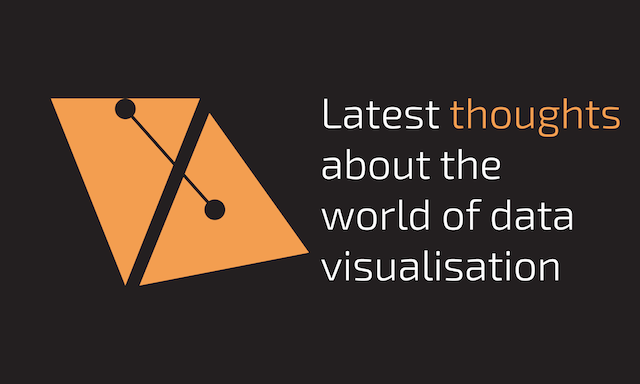Enrico Bertini has triggered another important data visualisation discussion with his latest excellent piece on the Fell in Love with Data site. I wanted to extend the dialogue by presenting my thoughts from here rather than sat in a comments box.
At the crux of Enrico’s discussion is the matter of whether there is evidence out there revealing that visualisation can actually influence decision-making. He seeks suggestions for any studies that demonstrate this impact and, if they don’t exist, asks ‘why is this the case?’.
Enrico’s secondary point is to question why the concept of visualisation as a communication tool has been neglected as a topic of research in this field. I don’t entirely concur with the view that this sub-set of research activity has been neglected – any academic paper you’ve read that was concerned in some way with identifying effective methods of design will be enhancing the study of visualisation from both the analysis and communication perspectives.
I do take his point that, on the face of it, there is little available evidence about the consequences of communicated, good practice visualisation. I’m currently digging through a few years worth of papers to form one of my ‘essential resources’ post so I will specifically keep an eye out for any titles that strike me as dealing with this issue.
I believe it is important to see visualisation in the context of a wider system. Let’s consider a fundamental purpose of visualisation as being to optimise the communication of information through engaging design and accuracy of message. Once you have managed to secure sufficient attention through elegant display and have achieved the imparting of accurate information, should we also expect visualisation to hold the responsibility for facilitating a decision, triggering an action or eliciting a response of any sort?
There is a wealth of theory out there (far too much for me to have even scratched beneath the surface) about the process and mechanics of decision-making which reveals the non-linear, counter intuitive, often illogical influence that so many different variables have on the outcome such as pre-existing knowledge, preconceptions and prejudices, temporary mindset, general mood, gut instinct etc. Of course the availability of information will influence the evidential thoughts that lead to a response, even more so if it is information that has been interpreted accurately and efficiently, but as a component of the wider decision-making system it is competing with many other destabilising factors.
I would strongly urge anyone to read the book Turning Numbers into Knowledge by Jonathan Twomey. I’ve so far only got through selected chapters but it is a enlightening guide to how people do and how people should use numbers to enhance the decision-making activities involved in the act of problem solving.
Perhaps we need to consider a blend of communication tactics, deployed alongside good visualisation practice in order to maximise the communication impact. I’m thinking here about some of the elements presented in Made to Stick (by Chip and Dan Heath) and the Tipping Point (by Malcolm Gladwell) which introduce some of the different attributes believed to maximise the impact of communication such as story-telling, delivery format, oratory skills, credibility of the communicator, emotions etc.
The well-executed visualisation can only achieve so much, so lets not attach all our expectations to it alone!

